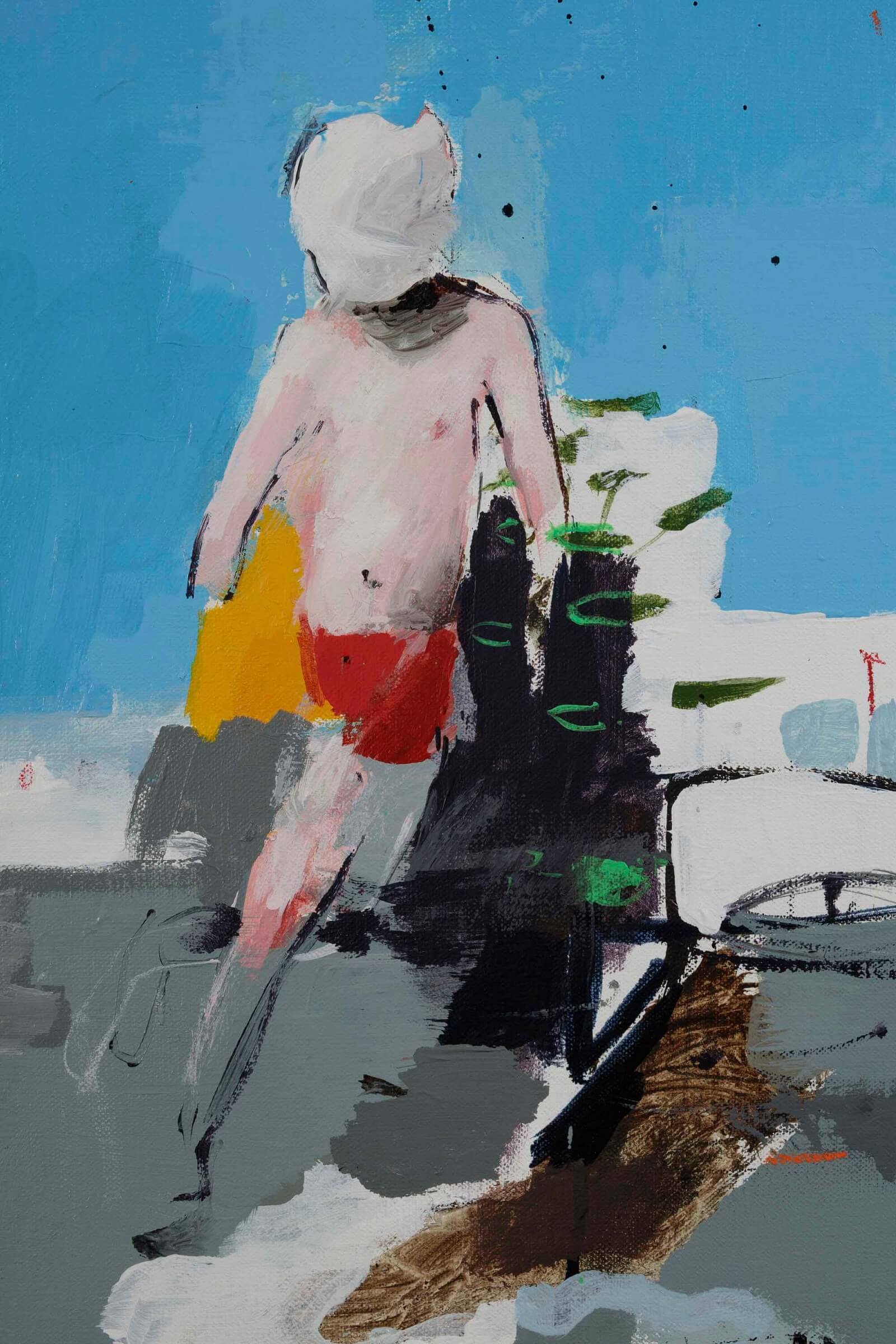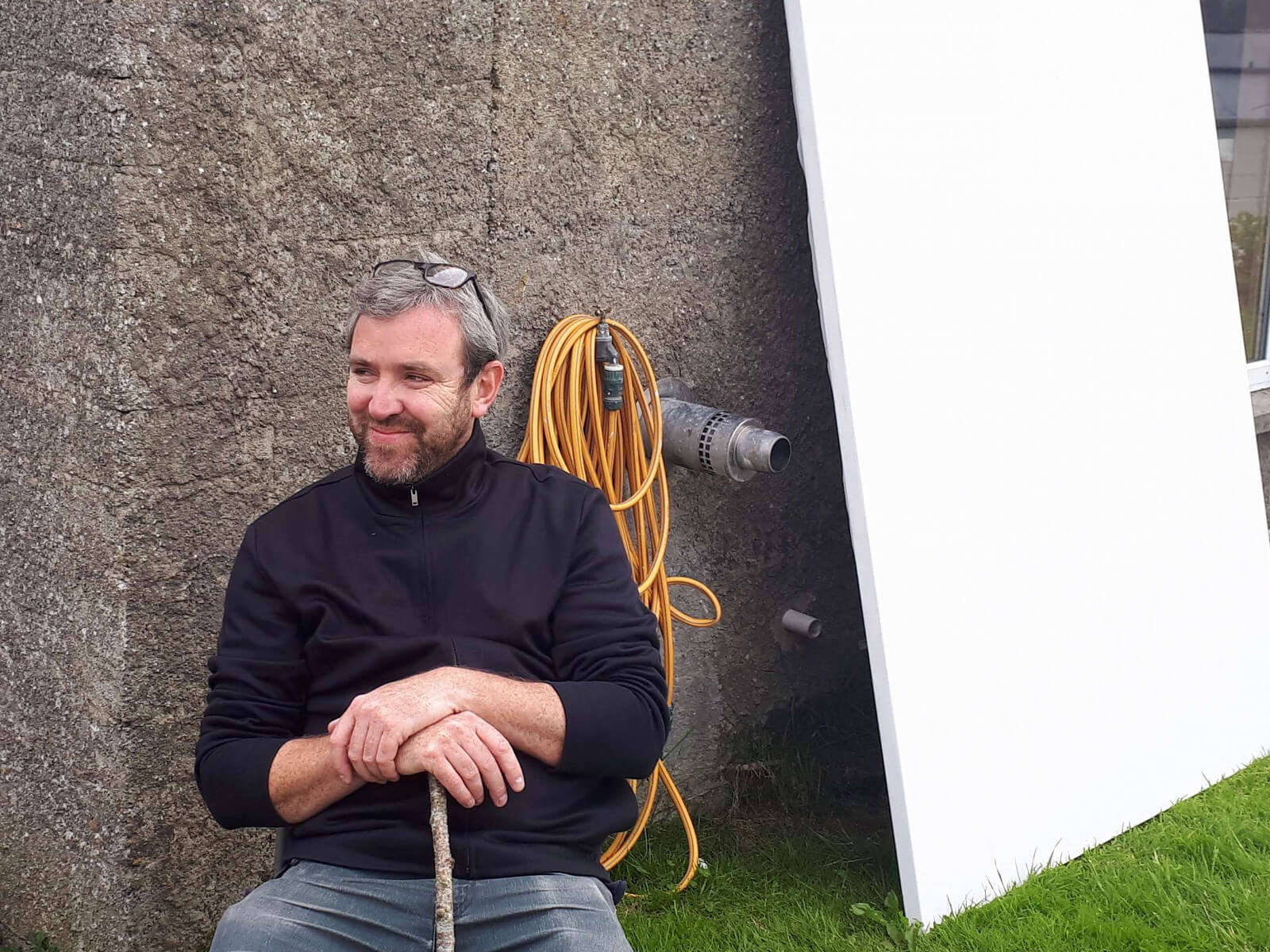Brian Harte
Everything You Touch
➝ German Press Release ➝ Download Press Release
“Landscape is the work of the mind,” claimed the great historian Simon Schama. “Its scenery is built up as much from strata of memory as from layers of rock.” Be it an idyllic plain field or an obscure wasteland, landscapes are also reservoirs of references; our references, indistinguishable from our biographies. Landscapes may look beautiful and bright from a distance, like the very narrative we tell ourselves of who we are. But come closer and you’ll notice how injured and scarred its surface is, full of mysterious traces and unjustifiable marks. There’s more to a landscape than meets the eye.
It may sound a bit peculiar to classify Brian Harte’s works as landscapes. In his third exhibition with GNYP Gallery, however, Harte is clearly showing a new departure from his previous oeuvre, expanding his occupation area from the unmistakable inside to a yet ambiguous outside. According to the artist, these spaces, “act for me as metaphysical spaces, sometimes landscapes, or theatre sets to hang my thoughts or my mood in paint.” Besides, these topological characteristics — are they interiors or exteriors? — corroborates with the idea of a different kind of panorama, always seen from a medium distance.
Therefore, if we are willing to accept that landscapes can provide us with new meanings that extrapolates the definitions that were used for so long, then, perhaps, we may have found a new configuration for what the genre can imply: an opening into our minds and into the world outside, where our actions — private, political, familiar, dreamlike — unfold. But what is exactly unfolding in these canvases?
Harte’s family is somehow there, making their appearance in stealth mode, discretely. There is someone there, no doubt about it, although you never know exactly who, or what they are actually doing. There may be also a specter of a bottle. The sketch of a chair. The suggestion of some activities. However, that’s about all we are granted to absorb. When you look again, the setting may have changed. The objects, displaced. The emotional climate, shifted. Can there be a more accurate approximation to the world of the mind? Of the family bubble we all experience, in a way or another? Nothing is stable. It never was.
The beautiful colors employed in these canvases, the warm radiance of tones, essays a familial environment, even if an unclear one. Yet, the proximity between persons and objects, their fluid presence, is granted unrestraint freedom, for the spaces are always full of breath. Even if sometimes, as in Son and Kilter, a closeup follows.
Brian Harte’s paintings are loaded with references, tiny openings that show as much of his inner world as of things outside of it: the dynamic and dreams and mysteries of everyday life. The starting point for these works may be controlled; the results, endless. The core is the infinite variety contained in the spaces where the theater of our lives blossom. The landscapes of our souls.
by João G. Rizek

Additional Information

One of the main characteristics of Brian Harte’s paintings is his bold use of color and the indeterminate condition of the canvases’ figures, which remain in a state between the sketch-like and the finished. The observer’s eye travels through the richly detailed and chaotic spaces depicted in the artist’s big canvases and slowly finds familiar elements, perhaps unnoticeable at first glance. A tile pattern in the background might recall a kitchen backsplash, for instance, whilst elsewhere you might detect the outline of something like a teacup or a knife. Therefore, Harte pursues an investigation on the relationship between abstractionism and figuration, between the sketch-like and the finished, a process that relates to the tradition of British painting.
Brian Harte graduated with first class honors at the Crawford College of Art and Design in Cork, and has been awarded the Arts Council of Ireland’s Project Award on two occasions. He was born in 1978 and lives and works in County Tipperary, Ireland.
Photo: courtesy of the artist
